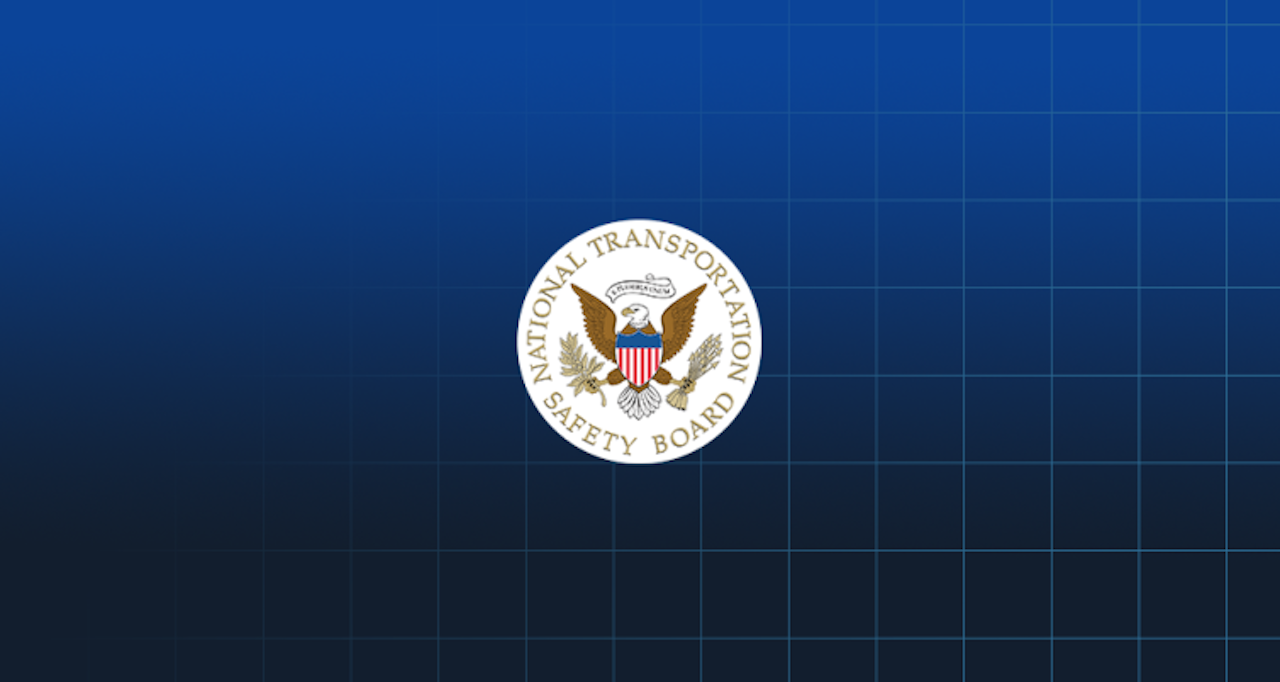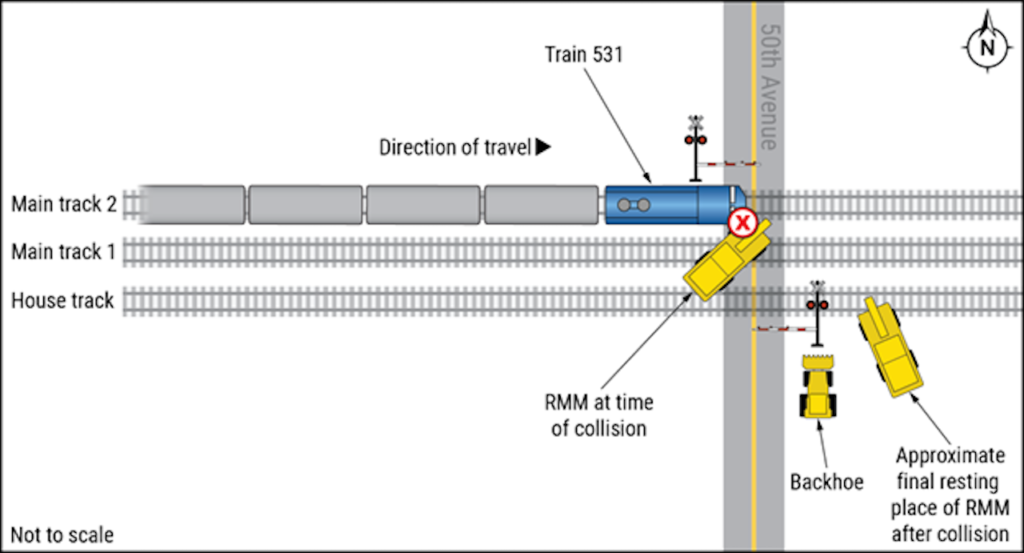
NTSB Releases Preliminary Report on Amtrak, UP M/W Machine Collision
Written by David C. Lester, Engineering Editor and Editor-in-Chief, Railway Track & Structures
NTSB releases initial report on Amtrak collision with UP roadway equipment. (NTSB)
The National Transportation Safety Board (NTSB) released its initial report on a July railroad collision.
Editor’s Note: Below is the NTSB’s initial report on the collision between an Amtrak train and a Union Pacific Railroad track maintenance vehicle. The NTSB said, “This is preliminary information, subject to change, and may contain errors. Any errors in this report will be corrected when the final report has been completed.”
What Happened
On July 15, 2022, about 11:01 a.m. local time, southbound National Railroad Passenger Corporation (Amtrak) train 531 (also known as Capitol Corridor Service), carrying 31 passengers and four crew, collided with an occupied Union Pacific Railroad (UP) Speed Swing roadway maintenance machine (RMM) at a highway-railroad grade crossing in Oakland, Calif. [1] The RMM operator was transported to a local hospital and treated for severe injuries; one passenger was transported to a local hospital for treatment for minor injuries; and two train crewmembers were treated at the scene for minor injuries. It was daylight and the weather was clear, 63°F, with no precipitation at the time of the accident. Damage was estimated to be over $265,000.
The UP roadway maintenance work group consisted of an employee-in-charge, an RMM operator, and a backhoe operator. The work group’s job assignment was to assist the Alameda County Regional Auto Theft Task Force by loading stolen or abandoned automobiles onto a tow truck near the highway-railroad grade crossing at 50th Avenue. Before the accident, the employee-in-charge was en route to 50th Avenue, the backhoe was located on the right-of-way south of the tracks, and the RMM was transitioning off the rails of main track 1 and onto the road at 50th Avenue. [2] The employee-in-charge planned to set up a work zone on main track 2 and move the RMM and backhoe along the north side of the right-of-way to begin work. (See figure.) The established work zone would stop all trains on a section of main track 2 while the RMM and backhoe operated nearby on the UP right-of-way, recovering the stolen and abandoned vehicles.
Amtrak train 531, traveling from Sacramento, Calif., to San Jose, Calif., consisted of one locomotive and five railcars. The collision with the RMM occurred at milepost 10.77 on UP’s main track 2 at the 50th Avenue highway-railroad grade crossing on UP’s Niles Subdivision. The grade crossing is equipped with gate arms and flashing warning lights, and preliminary information indicates the grade crossing warning system was operating at the time of the collision. The locomotive was damaged, but neither the locomotive nor railcars derailed. The RMM received heavy damage from the impact of the train and was pushed past main track 1 onto the nearby house track. [3]

In the vicinity of the accident, UP authorizes train movements on the Niles Subdivision by operating rules, special instructions, timetable instructions, and the signal indications of a wayside signal system, and supplemented with an overlaid Positive Train Control (PTC) system. The maximum allowable speed on this section of track was 79 mph for passenger trains. Preliminary review of the data from the leading locomotive’s event recorder showed that train 531 was traveling 68 mph at the point of impact and that the engineer activated the train’s emergency brakes immediately after the collision occurred. The video from the forward-facing image recorder, which also records audio, showed that the engineer activated the train horn, as required, on approach to the grade crossing, and the RMM turned in front of the train and fouled the track just before the accident. [4]
While on scene, National Transportation Safety Board (NTSB) investigators conducted sight distance observations at the grade crossing, inspected on-track equipment, reviewed data from the signal system and the lead locomotive’s event recorder and forward-facing image recorder, and conducted interviews. NTSB’s investigation is ongoing. Future investigative activity will focus on roadway worker protections.
Parties to this investigation include the Federal Railroad Administration, Amtrak, UP, the Brotherhood of Maintenance of Way Employes, the Brotherhood of Locomotive Engineers and Trainmen, and the California Public Utilities Commission. [5]
Notes
1 (a) Amtrak is a passenger railroad service that provides medium- and long-distance intercity passenger rail service in the contiguous U.S. and to nine cities in Canada. (b) The collision occurred at U.S. DOT Crossing Inventory Number 749716B.
2 Here, right-of-way refers to land owned or operated on by a railroad.
3 House track is a track used for receiving, delivering, or storing on-track equipment.
4 Fouled means being in proximity to a track such that an individual or equipment could be struck by a moving train.
5 The Brotherhood of Maintenance of Way Employes Division spells the word “Employes” in its name with only one final e.



